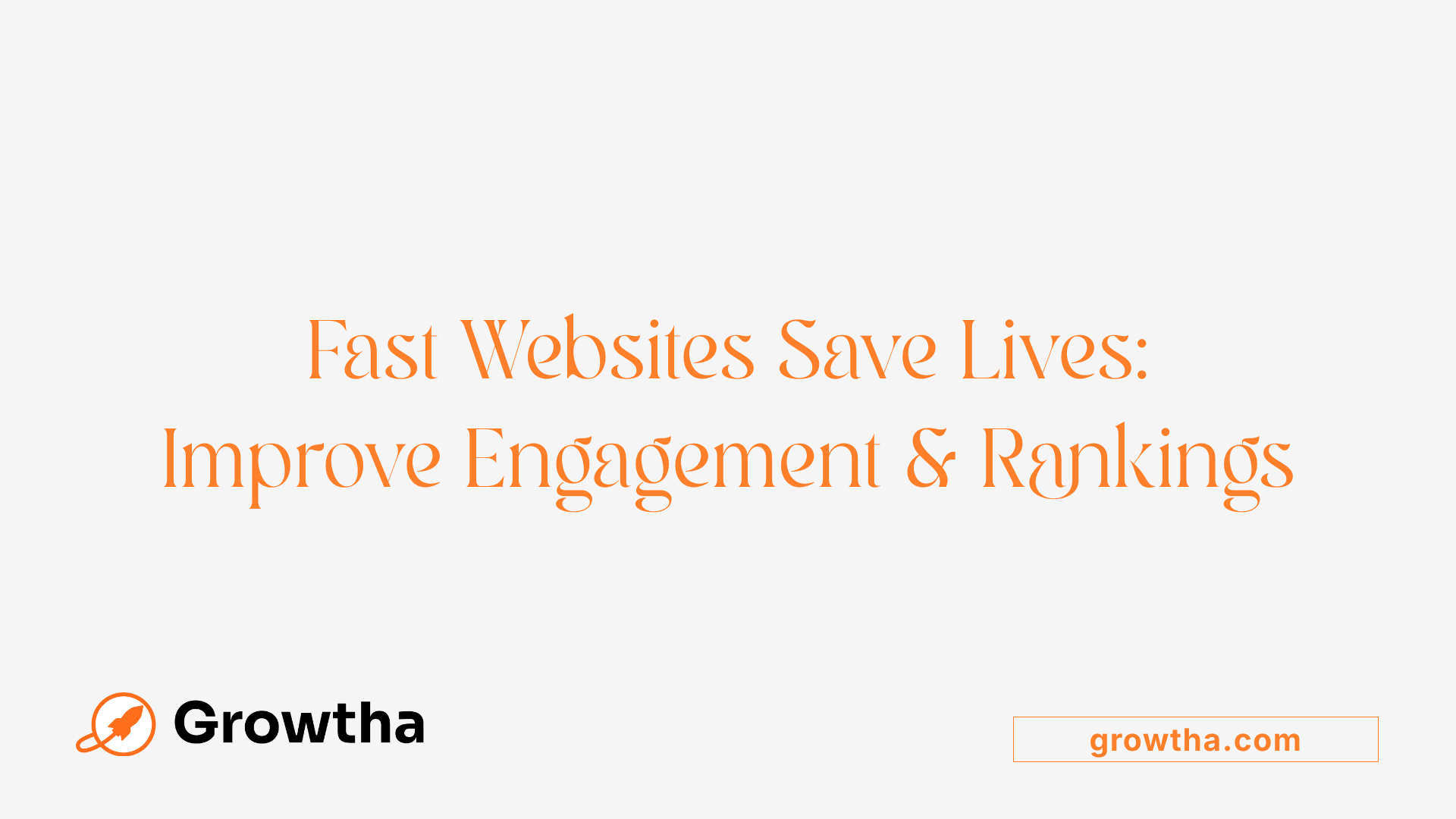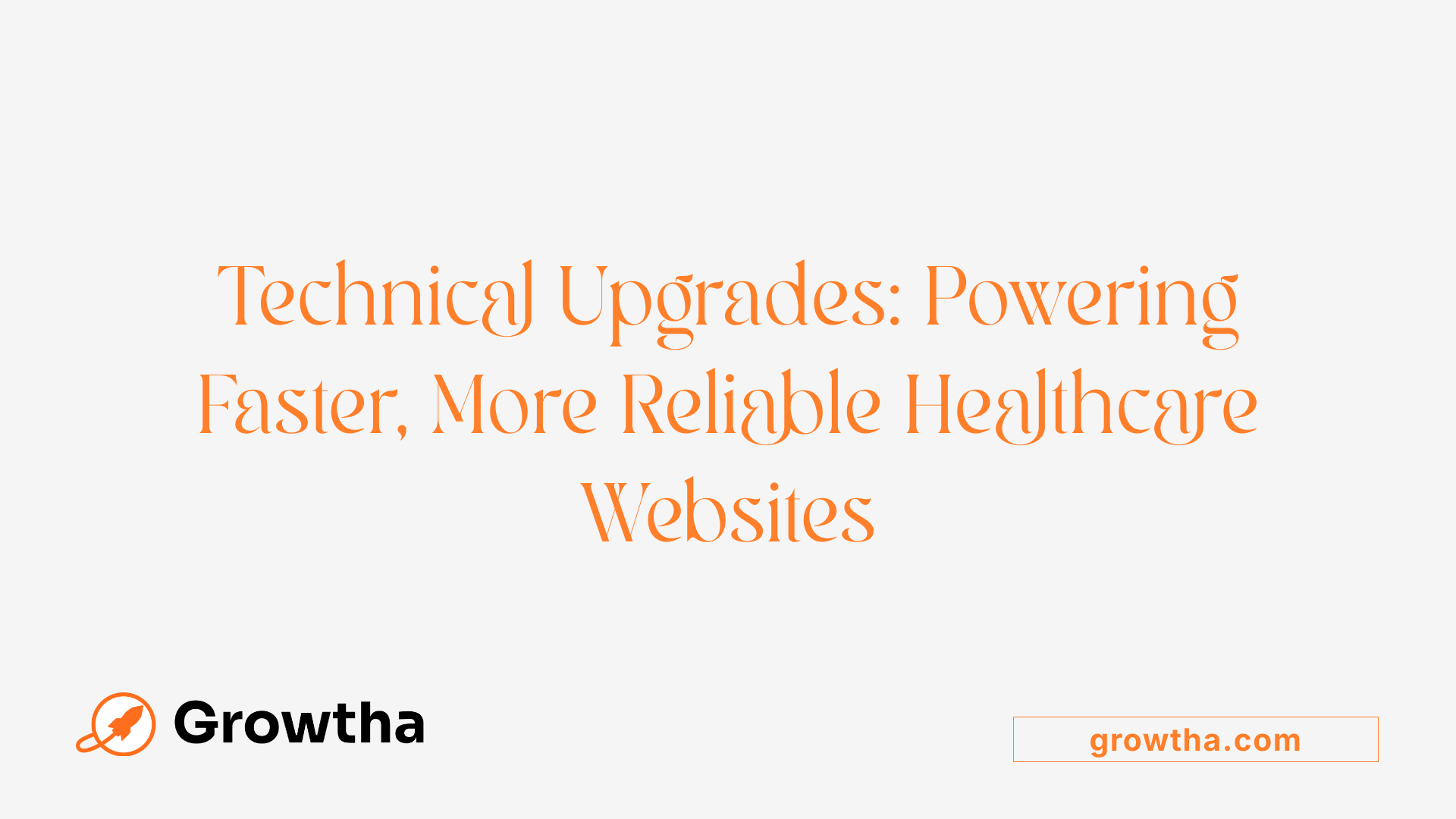Improving Page Speed for Medical Websites
Enhancing Healthcare Website Performance for Better Patient Engagement


Improving Page Speed for Medical Websites
The Critical Role of Page Speed in Healthcare Websites
In the digital age, the speed at which a healthcare website loads can significantly influence patient engagement, trust, and overall clinical success. With visitors losing focus in as little as 0.3 to 3 seconds on slow-loading pages, ensuring rapid and reliable website performance is paramount. This comprehensive guide explores proven strategies, technical upgrades, and best practices aimed at optimizing page speed for medical websites, backed by industry-leading tools and real-world case studies.
The Impact of Website Speed on User Experience and SEO in Healthcare

How does website speed impact user experience, engagement, and search engine rankings in healthcare?
Website speed plays a vital role in shaping the overall patient experience on healthcare websites. When a site loads quickly—generally within 2 to 3 seconds—it allows visitors to access information effortlessly and complete actions like booking appointments or contacting staff without frustration. Slow-loading pages can cause visitors to lose focus, often abandoning the site within 0.3 to 3 seconds.
This swift experience fosters higher engagement. Patients are more likely to stay longer, explore additional content, and trust the platform when it responds promptly. Conversely, sluggish websites tend to have higher bounce rates, discouraging potential patients from seeking services.
From a search engine perspective, website speed directly influences rankings through factors like Core Web Vitals—metrics used by Google to assess page performance. Better load times improve visibility, helping healthcare providers attract more local patients. Mobile responsiveness and optimized loading are particularly important, as over half of website traffic comes from smartphones. Ensuring a fast, smooth experience on all devices enhances both user satisfaction and SEO performance.
In summary, a fast, well-optimized website improves patient engagement, reduces bounce rates, and elevates search engine rankings, making it an essential aspect of a successful healthcare online presence.
The Influence of Core Web Vitals on Medical SEO

What are the key metrics and performance indicators used to evaluate medical website speed?
Evaluating medical website speed involves several crucial performance metrics. The primary ones include page load time, Time to First Byte (TTFB), and First Contentful Paint (FCP), which measures how quickly the first piece of content appears on the screen. The Speed Index, which should ideally be below 2000 milliseconds, indicates the overall visual stability during loading.
Website uptime and server response times are also vital, as they affect how quickly pages load for visitors. Beyond technical metrics, user engagement indicators such as bounce rate, scroll depth, and session duration reflect how visitors interact with the site.
Tools like Google Lighthouse, Google Search Console, Hotjar, and GTmetrix provide detailed insights into these metrics. Regular monitoring helps identify slow-loading pages and areas needing optimization, supporting better responsiveness and higher search visibility.
Technical Upgrades and Development Strategies for Faster Healthcare Websites

What role do technical upgrades and development strategies play in enhancing healthcare website load times?
Technical upgrades and development strategies are essential for creating a fast, reliable, and user-friendly healthcare website. These improvements include upgrading server hardware, such as moving to SSD hosting plans, which drastically reduce server response times. Implementing a Content Delivery Network (CDN) helps distribute content more efficiently by caching it across multiple locations worldwide, thus decreasing latency for users regardless of their geographic location.
Optimizing code through minification and file combination reduces the number and size of HTTP requests, leading to quicker load times. Additionally, enabling browser caching and compressing files with Gzip or Brotli protocols allow repeat visitors to experience faster page loads. Loading JavaScript files asynchronously prevents render-blocking, further speeding up display times.
Continuous monitoring using diagnostic tools like Google PageSpeed Insights, WebPageTest, and Google Analytics is vital. These tools identify performance bottlenecks and provide actionable insights for ongoing improvements. In the healthcare sector, where user trust and seamless experience are critical, these upgrades significantly boost user engagement, support mobile responsiveness, and improve Search Engine Optimization (SEO) rankings, all of which help attract and retain patients.
What are effective strategies for improving page speed and website performance in the healthcare sector?
To enhance healthcare website performance, several strategies must be employed. First, optimizing images by compressing and resizing them, ideally using modern formats like WebP, can substantially reduce loading times. Minifying HTML, CSS, and JavaScript files removes unnecessary characters and spaces, decreasing overall file sizes.
Utilizing a CDN minimizes latency by serving content from the nearest server to the visitor, ensuring rapid access even during high traffic. Browser caching stores static resources locally on users' devices, enabling faster loads on subsequent visits. Gzip or Brotli compression further decreases the size of transferred data.
Reducing the number of HTTP requests is also crucial—this can be achieved by combining multiple style sheets and scripts, and deferring non-essential JavaScript loading with asynchronous functions. Regular performance assessments using tools like Google PageSpeed Insights or WebPageTest allow teams to identify specific issues and prioritize fixes.
Complementing technical improvements with a responsive design, optimized mobile experience, and adherence to healthcare-specific SEO standards, such as fast-loading pages and accessible content, creates an optimal experience. These efforts are especially important in healthcare, where patients expect quick, trustworthy access to information and services.
Building a Faster, More Trustworthy Healthcare Website
Optimizing website speed is a continuous process that combines technical upgrades, strategic content management, and ongoing performance monitoring. By prioritizing technical SEO, leveraging modern tools for testing, and implementing user-focused enhancements, healthcare providers can significantly improve page load times. This leads to a better user experience, higher search engine rankings, increased patient engagement, and ultimately, improved healthcare outcomes. Embracing these best practices not only supports compliance and security standards but also builds trust and credibility in the digital space, ensuring that healthcare websites remain competitive and responsive to patient needs.
References
- 8 Amazing Tricks to Improve Your Practice's Website Performance
- Best Practices to Enhance a Medical Website Conversion Rate
- How to Optimize Healthcare SEO with E-E-A-T Strategies
- Healthcare SEO: 12 Expert Medical SEO Tactics
- [PDF] Medical Website Best Practices to Increase SEO - Boston Scientific
- Is Your Medical Website Optimized? 11 Proven Strategies for Fine ...
- Tips to improve website speed | How to speed up websites | Cloudflare
- Speeding Up A Healthcare Website - BionicWP
- How Private Healthcare Practices Can Boost Website Performance ...
- Website Health: A Guide to Optimal Online Performance - DashClicks







